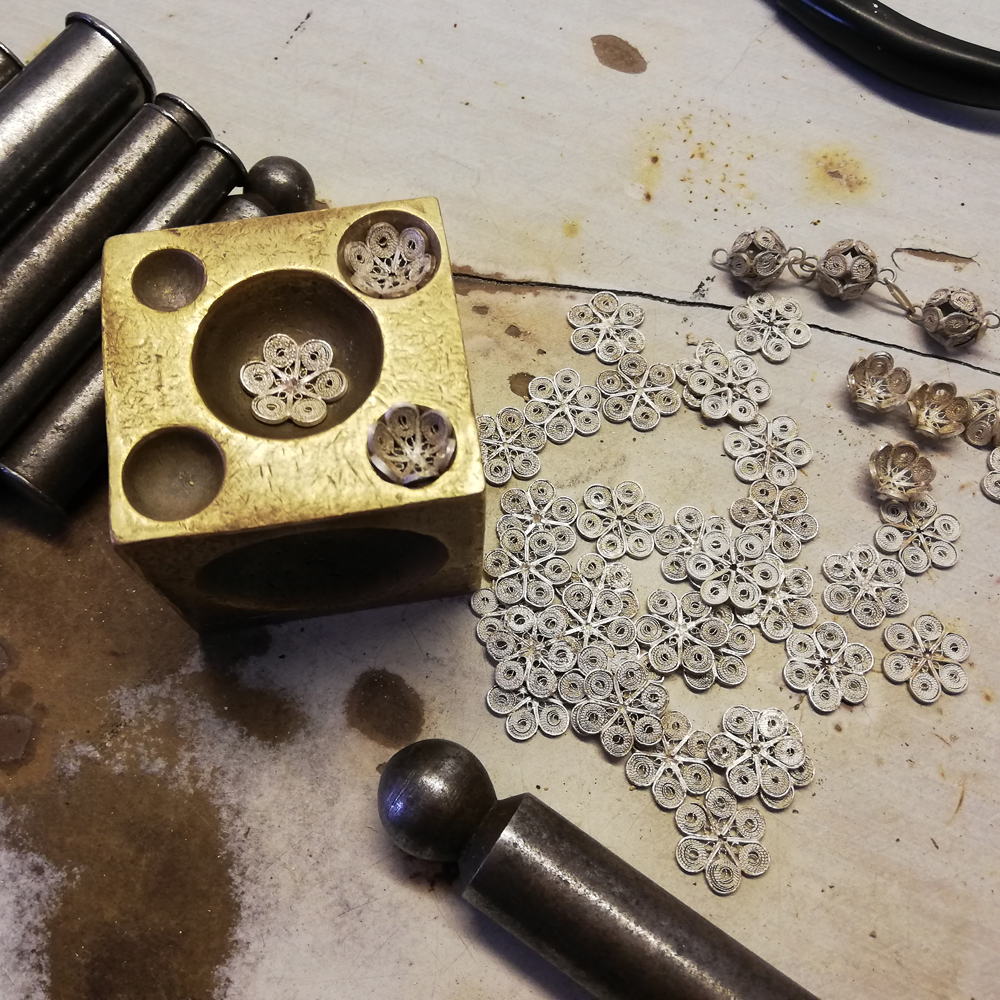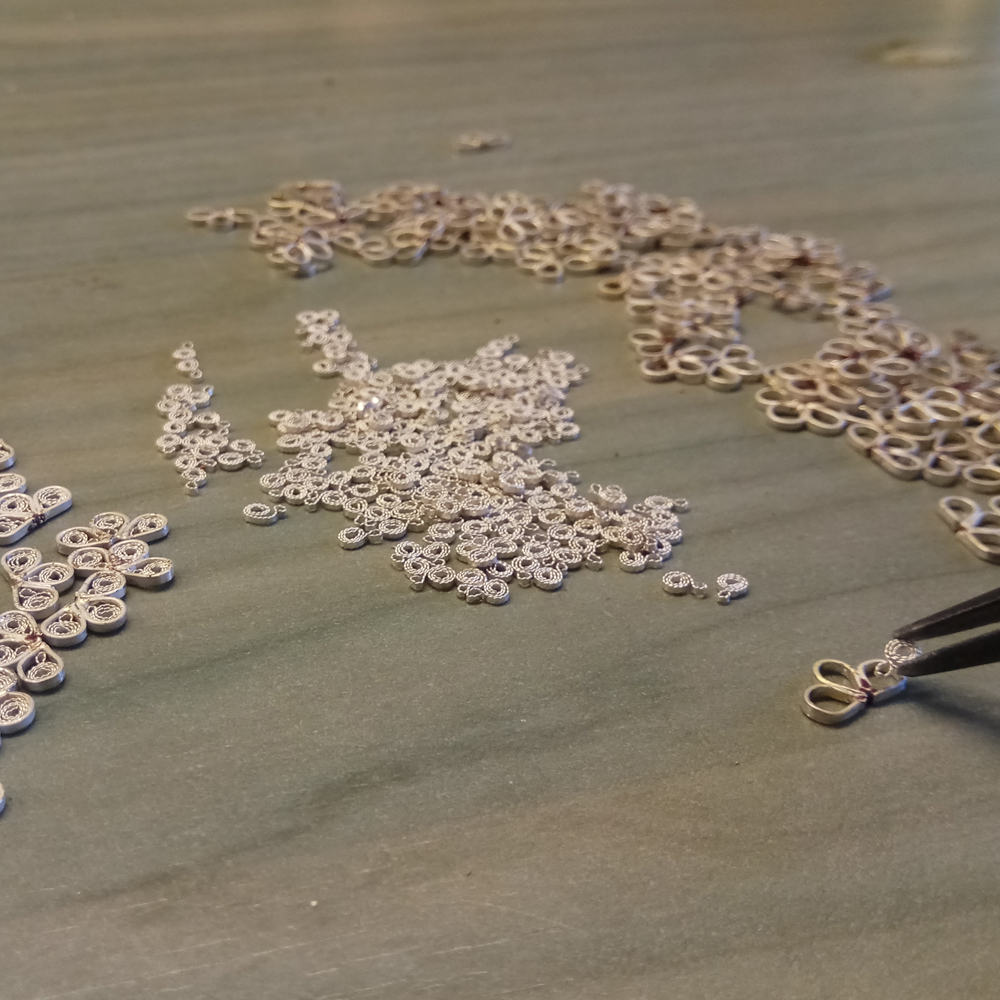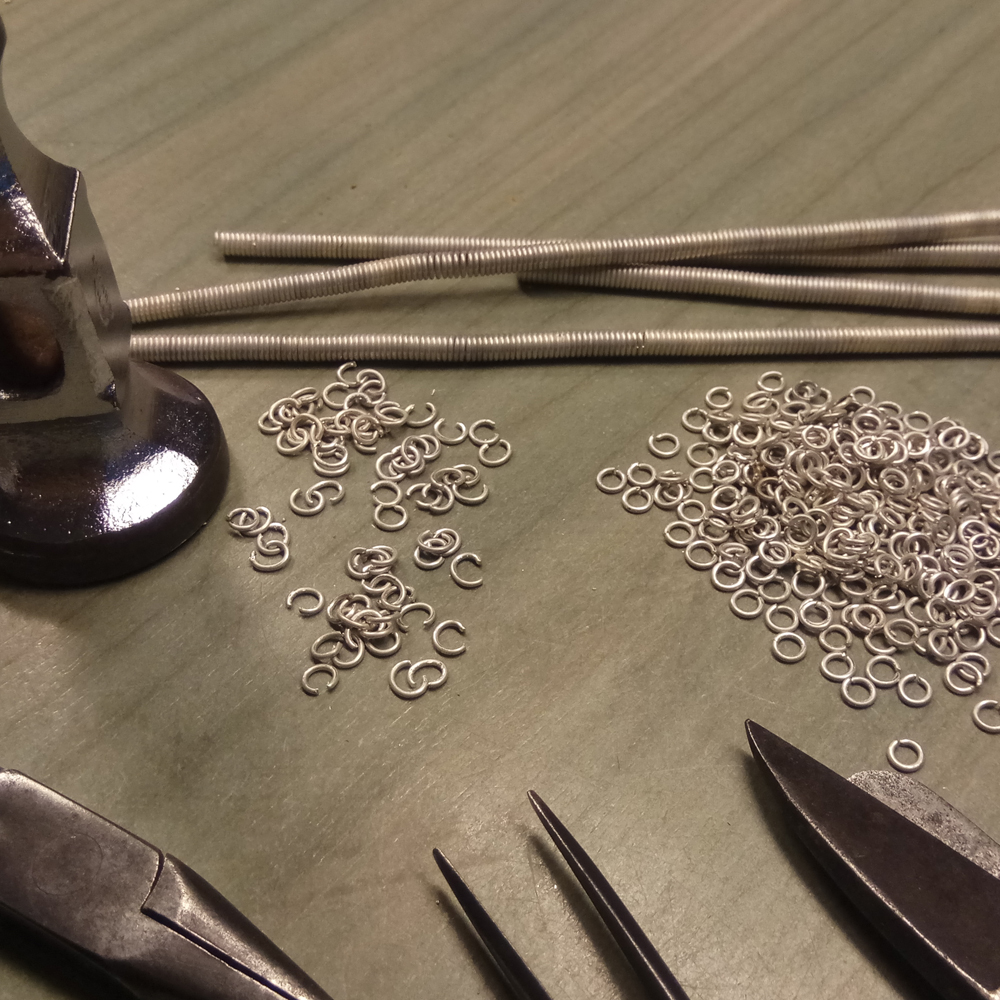Generally, filigree work consists of two parts: One is the border wire (vultar), and the other is the filling wire (rizzol). The fact that there exist Maltese terms show that the manufacturing of filigree is a long standing tradition in Malta.
Filigree: Ornamental lattice work consisting of an intricate wire design.
Border wire (vultar) is a flattened, single stranded wire that is shaped into the form needed as a frame to retain the filling wires. (Of traditional components used by local craftsmen to build up the filigree frame.)
Filling wire (rizzol) is composed of two twisted strands which are subsequently flattened and then used as filling within the border wire. (Of traditional components used by local craftsmen.)
The most frequently used traditional designs are the Maltese cross, the Maltese boats (Dghajsa) and other historical motifs. Traditional hand-made Maltese filigree also includes geometric shapes, rosettes, flowers and figures of animals, especially butterflies and birds. Large ornaments such as trays, dishes, figures, models are also often manufactured.
(Resources: Traditional Hand-made Maltese Filigree: General Characteristics and Identification Parameters, Malta Standards Authority, 2003)




